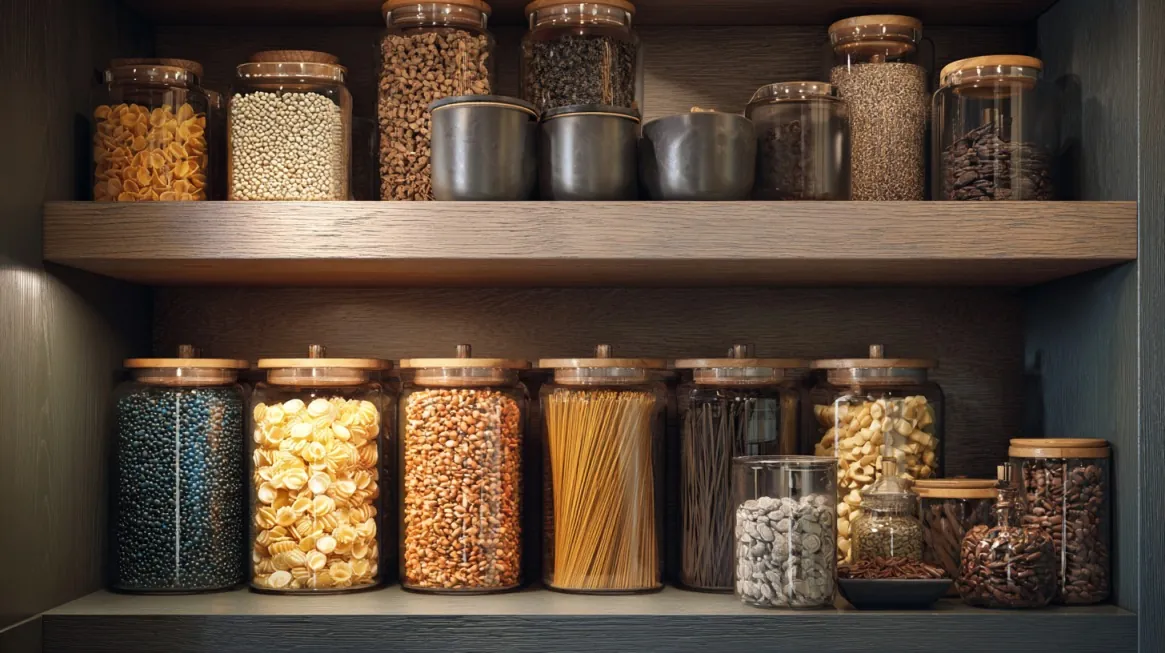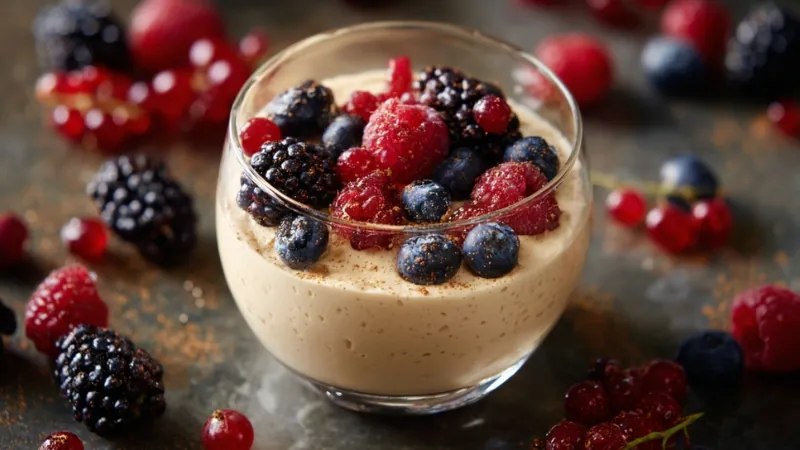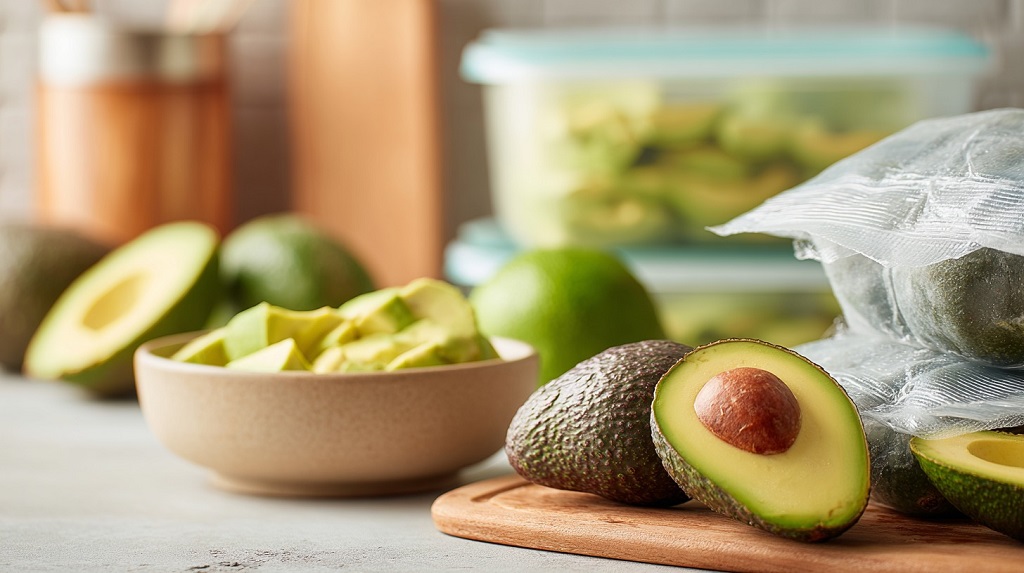A well-stocked Southern pantry does more than provide convenience. It embodies self-reliance, family heritage, and culinary preparedness. Each item tells a story, each shelf carries history.
Flavor comes first in Southern cooking, but so does tradition.
A proper pantry serves as a culinary anchor for generations, ready to transform simple ingredients into soul-satisfying meals with bold character.
Grains & Baking Basics
A Southern Pantry begins with its grains. These are not just filler; they’re tradition, texture, and backbone. Meals feel incomplete without at least one grain-based staple on the plate.
Cornmeal takes priority. Every cook who values Southern tradition knows the difference between generic options and high-quality, stone-ground or White Lily cornmeal. For cornbread that forms a golden crust or catfish that fries to perfection, texture and consistency matter.
Fine-ground varieties allow for better batter adhesion, while coarser textures lend bite to spoonbread or hush puppies.
Flour must be present in multiple forms. White Lily is the reigning choice. Made with soft winter wheat, it’s lighter and lower in protein, producing fluffier biscuits and more delicate baked goods.
Self-rising flour helps streamline baking, especially when preparing quick breads or batters. All-purpose flour works for gravies, fried chicken coatings, and roux-building.
Grits serve as comfort in a bowl. Long-cooking yellow or white grits become creamy when prepared low and slow with water, milk, or broth. Instant varieties fall short in flavor and texture, often turning pasty instead of silky. Grits pair beautifully with shrimp, cheese, or even a simple pat of butter.
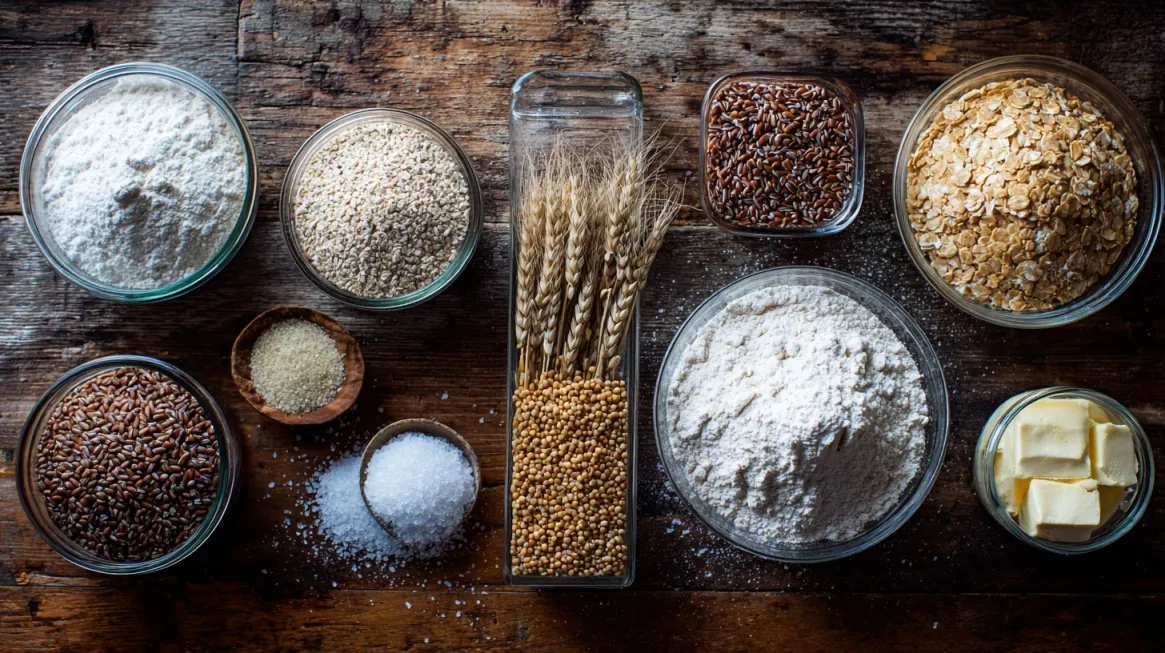
- White Lily flour
- Stone-ground cornmeal
- Long-cooking yellow or white grits
- Long-grain rice
- Egg noodles or elbow macaroni
Legumes & Tinned Goods
Protein and sustenance go hand in hand in any Southern Pantry, and legumes provide both with ease. Dried beans, peas, and lentils deliver long shelf life, hearty texture, and endless recipe possibilities.
Black-eyed peas hold cultural and culinary significance, particularly on New Year’s Day, when they’re served for good luck. More than tradition, they provide flavor, structure, and adaptability. Slow-cooked with ham hocks or turkey necks, they produce meals that feel timeless.
Red kidney beans work well in chili, stews, and red beans and rice. Their firmness allows them to hold shape through long simmers. Lentils cook faster than other legumes, making them ideal for weeknight meals and vegetarian options.
Ro-Tel deserves permanent pantry space. Diced tomatoes blended with green chiles create a base for cheese dips, taco fillings, casseroles, and chili. When time is short and flavor needs boosting, Ro-Tel provides the shortcut without compromise.
- Black-eyed peas, red kidney beans, lentils
- Ro-Tel (diced tomatoes with green chiles)
- Canned tomatoes, okra, corn, green beans
Pickled and Preserved
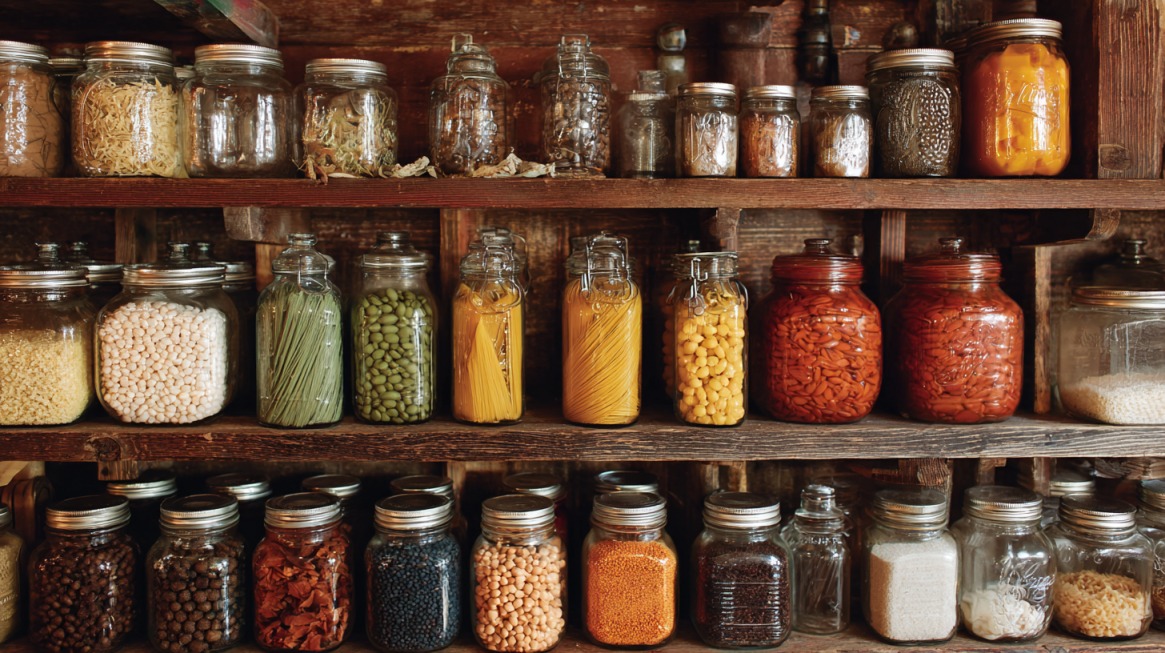
Flavor in a Southern Pantry comes not only from spices but also from brined and preserved ingredients that add brightness, crunch, and acidity. These pantry heroes lift rich meals and balance out bold dishes.
Pickled okra delivers tang and snap, often served as a snack, salad topper, or side with fried chicken.
Chow-chow, a pickled relish made with cabbage, peppers, and onions, brings depth to pinto beans or black-eyed peas. Dilly beans deliver a vinegar punch with a crisp texture that holds up in salads, charcuterie, or sandwiches.
Apple cider vinegar belongs in every kitchen with Southern roots. Its versatility is unmatched—used in slaws, collards, marinades, sauces, and pickling projects. One bottle does it all and does it well. Shelf-stable and powerful, it’s essential for cooks who care about flavor and function.
- Pickled okra, chow-chow, dilly beans
- Apple cider vinegar
Classic Southern Seasonings
A Southern Pantry without proper seasoning is incomplete. Flavor builds through layering, and these staple seasonings provide the base for that depth.
Seasoning salt combines paprika, garlic, onion, and other herbs into a single shaker that can elevate anything from potatoes to fried fish. It eliminates guesswork while still allowing customization.
Steak seasoning brings a bold presence. Coarse pepper, garlic granules, and savory herbs give meats the crust and flavor that backyard cooks chase. Ideal for ribeye, pork loin, or grilled vegetables, it’s more than just for beef.
Seafood boil mixes like Old Bay, Tony Chachere’s, or Zatarain’s offer complexity. A mix of cayenne, mustard seed, clove, and allspice creates perfect shells and aromatic steam. Seafood boils aren’t just meals—they’re events, and the right seasoning makes them memorable.
BBQ rubs must fit the protein. Pork needs sweetness and smoke.
- Seasoning salt
- Steak seasoning
- Seafood boil spice mix
- BBQ rubs (pork, beef, chicken)
Specialty Blends
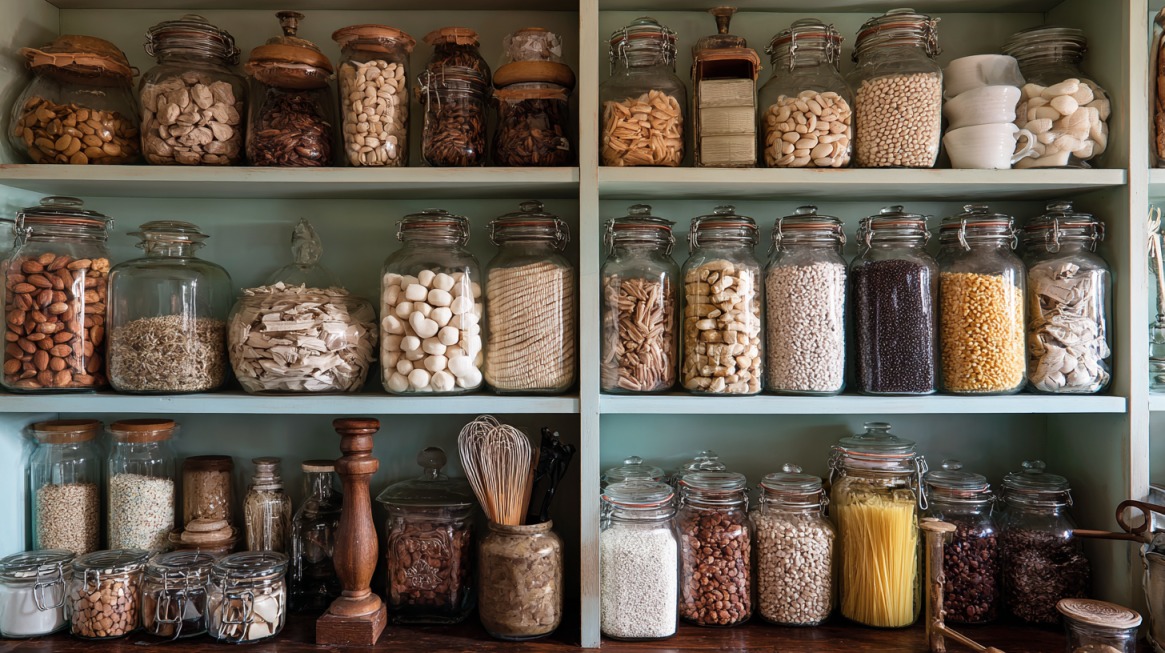
Blends tailored to certain cuisines and flavor profiles help stretch a Southern Pantry into fusion territory without abandoning roots. These additions bring excitement and creativity to weeknight dinners and family feasts.
Lemon pepper fuses brightness with backbone. Made with lemon zest and cracked black pepper, it wakes up roasted vegetables, baked chicken, and grilled fish with little effort.
Greek rubs take the familiar and spin it Mediterranean. Oregano, cinnamon, nutmeg, and basil bring warmth and herbal complexity to lamb, chicken, or roasted potatoes. A touch of olive oil turns the rub into a marinade ready for grill night.
Jerk seasoning turns up the heat. A mix of allspice, thyme, brown sugar, cinnamon, and scotch bonnet pepper infuses meats with Caribbean fire.
- Lemon pepper
- Greek rub
- Jerk seasoning
International Inspirations
Global flavors have found a welcome spot in the modern Southern Pantry. These additions don’t replace tradition—they enhance it.
Indian curry powders add fragrance and depth. Cumin, turmeric, coriander, and cardamom bring body to stews, vegetables, and rice dishes. Just a teaspoon can shift a dish entirely.
Aleppo pepper, also known as silk chili, provides gentle heat with a tomato-like tang. Use it on roasted meats, mixed into rubs, or as a topping for deviled eggs or hummus.
- Indian curry powder
- Aleppo pepper
Fats & Oils

Flavor starts with fat. Southern cooking leans heavily on the kind that adds taste as well as texture, and no Southern Pantry is complete without a range of fats that work for every method of preparation.
Bacon fat isn’t optional—it’s essential. Saved from weekend breakfasts and stored in a jar by the stove, it becomes the first ingredient in gravies, greens, beans, and cornbread. Just a spoonful elevates the ordinary into the unforgettable.
Olive oil serves both everyday needs and gourmet moments. For sautéing vegetables or finishing pasta, a mild oil works well. For vinaigrettes and drizzles, unfiltered or cold-pressed options like Les Moulins Mahjoub add character without overpowering.
- Rendered bacon fat
- Everyday and high-quality olive oil
Condiments & Sauces
No meal ends strong without the right finish. Condiments and sauces bring tang, spice, and moisture—often making the difference between bland and crave-worthy.
Duke’s Mayonnaise has earned its status. Thicker than most, slightly tangy, and made without sugar, it defines Southern slaws, deviled eggs, and tomato sandwiches. Many will argue no other mayo belongs in a true Southern Pantry.
Hot sauce preferences vary, but Crystal, Tabasco, and Texas Pete offer three distinct experiences. Crystal offers vinegar-forward mild heat, Tabasco brings sharp spice, and Texas Pete lands between both.
Watcharee’s Thai sauces help cooks introduce global flavor without overthinking it. Peanut sauce pairs beautifully with grilled meats or noodles. Pad Thai sauce sweetens vegetables or shrimp stir-fry dishes with ease.
- Duke’s mayonnaise
- Crystal, Tabasco, or Texas Pete hot sauce
- Watcharee’s Thai peanut or pad Thai sauce
Sweet & Savory Enhancers
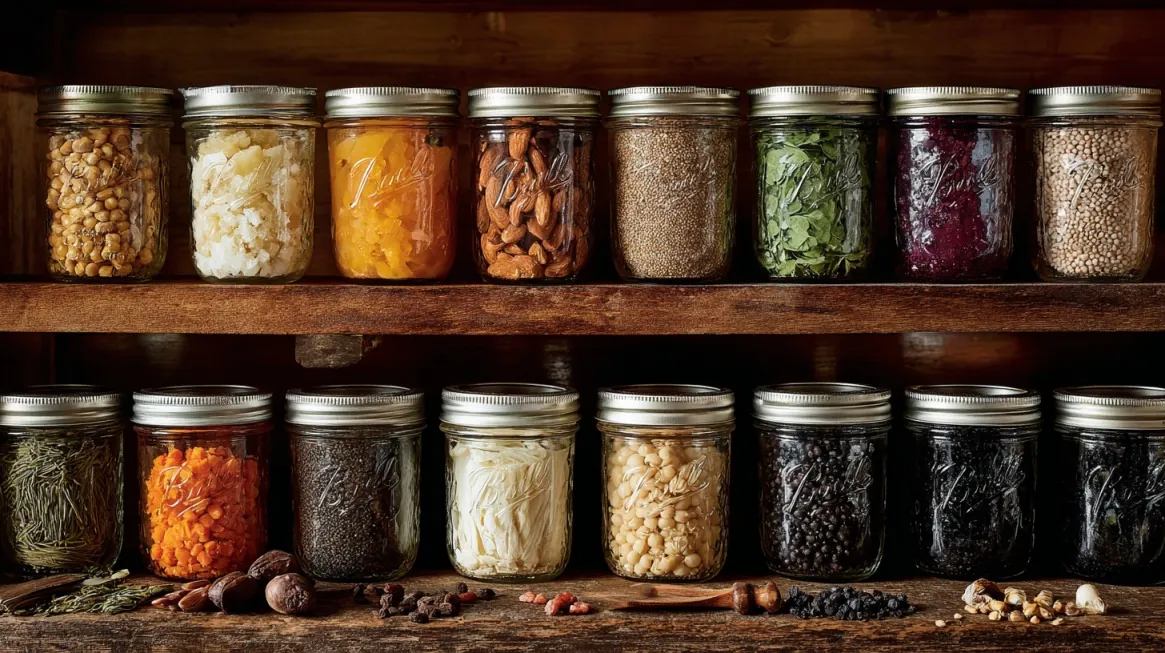
Finishing touches often make the biggest difference. These sweet and savory additions round out the Southern Pantry with flavor boosters used in both expected and surprising ways.
Pumpkin pie spice and apple pie spice bring holiday flavor into everyday baking. A sprinkle in oatmeal, sweet potato casserole, or banana bread adds complexity and comfort. Keep these blends close even outside the holidays.
Mustards deserve respect. Dijon mustard, with its sharp profile, elevates vinaigrettes and marinades. Whole grain varieties offer texture and flavor in sandwiches, glazes, and sauces for meat dishes.
- Pumpkin pie spice
- Apple pie spice
- Dijon or whole grain mustard
DIY Spice Mixes: Customizing Your Pantry
Creating custom spice mixes takes your Southern Pantry from functional to personal. Blends bought off the shelf often come packed with preservatives, fillers, and more salt than needed. By making your own, you get full control over ingredients, freshness, and intensity.
Adjust heat to match family preferences. Cut down on sodium. Add a little sugar or smoked paprika if that’s what the dish calls for.
Blending spices also gives room for creativity. Want a Cajun rub that’s heavier on garlic? Go for it. Prefer a poultry seasoning with extra sage? No problem. Home mixing encourages experimentation, which can lead to signature flavors that family and friends recognize as yours.
Over time, you’ll build a selection of go-to blends for specific meals—barbecue nights, shrimp boils, Sunday chicken, or holiday roasts.
Always start small. Mix one or two tablespoons of each ingredient first and give it a try on vegetables, meats, or even popcorn. Once the balance feels right, go ahead and scale it up. This avoids wasting spices and ensures the flavor profile is dialed in just the way you want it.
Storage matters just as much as the mix itself. Oxygen, light, and heat break down flavor. Keep blends in small, airtight jars—preferably glass. Use dark cabinets or drawers instead of leaving them on the countertop. Oxygen absorbers inside the jars help extend shelf life.
Labels should include the name, ingredients, and date mixed. Avoid guessing a year later whether that unlabeled jar is chili powder or taco seasoning.
@chef_alams You’ll be surprised how little you actually need when you start making your own spice blends at home. It’s simple, it’s healthier, and you won’t find yourself depending on all those artificial seasonings. Start small, try your own, and thank me later. Spice Blend •Coriander seeds •Fenugreek •Fennel #spiceblend #africanfood #flavours #cookingathometiktoktv #foodtok #foodtiktok #ghanatiktok🇬🇭 #lagoschef #nigerianfood #viralvideos ♬ GANGA RIDDIM (feat. Mehdi Nassouli) – Jarreau Vandal & Dave Nunes
- All-purpose house seasoning (salt, garlic, onion, pepper, paprika)
- BBQ dry rub (brown sugar, smoked paprika, mustard powder, cayenne)
- Cajun seasoning (paprika, garlic, oregano, thyme, black pepper)
- Herb blend for poultry (sage, thyme, rosemary, marjoram)
- Taco seasoning (chili powder, cumin, garlic powder, paprika, coriander)
Final Thoughts
Building a Southern pantry means preparing for flavor-packed meals, honoring family legacies, and being ready for anything from a weeknight dinner to an unexpected guest.
A thoughtful pantry brings pride and comfort. Every jar, bottle, and blend holds purpose. Stock wisely, cook confidently, and keep traditions alive at the table.
I’m Leo McIntyre, and my love for cooking was born in my grandmother’s kitchen, where I discovered the magic of traditional Southern recipes. Inspired by her passion and the flavors of my childhood, I started SouthernParm to share these treasured family dishes and keep the rich culinary traditions of the South alive for everyone to enjoy.

